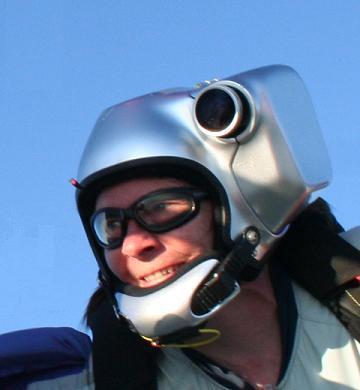
Detecting AAD misrouting (Was: Fatality - Zwartberg (Belgium))
By
RogerRamjet, in Gear and Rigging
Recommended Posts
QuoteQuoteMost (all? haven't looked)
"Haven't looked" appears to be the theme here.
In case my point was missed, I'm saying that the owner a a rig owns responsibility for keeping it safe and it's not fair to make anyone else own that chore. Excuse the fuck out of me if you think the pilot should be responsible.
The FARs say what they say. The FAA really don't care what you interpret them to mean or what you think is "fair".
Ken
QuoteExcuse the fuck out of me if you think the pilot should be responsible.
First of all no need to take that tone with Terry, no where did I see in his post that HE thinks the pilot should be held responsible, however is is the law according to the FAA, I guess you missed that point! Terry don't make the laws so don't bitch at him for pointing it out to you and other who don't seem to get it. If you want to walk out of the loft and yank the seal off your rig go for it, and when you get ramp checked by the feds or asked by one as you walk back from the LZ to see your card and rig,(yes they have the legal right to do so at anytime) have fun filling out the paper work and pissing off the pilot and rigger who signed the card, it's your choice.
labrys 0
QuoteFirst of all no need to take that tone with Terry,
It pissed me off to ne accused of recklessness:
QuoteThat's why YOU not following the LAWS puts the Pilot, and in some cases arguably the DZ operator, in jepordy also.
When I have stated unequivocally that I agree that the practice of checking the seal is a good idea:
QuoteI would like to make it clear that I understand the wisdom behind the common practice. If someone only checks my data card and not my seal they have no way to know whether or not I might have had a reserve ride and stuffed the reserve back in myself.
riggerrob 644
riggerrob 644
Mark
>>>>>>>>>>>>>>>>>>>>>>>>>>>>>>>>>>>>>
Oh Mark!
You have a fine sense of humor!
Yes, it is possible to repack a Security 350 Safety Chute - without removing the seal thread.
However, GQ Security closed their American factory in 1984. Now the parent company (GQ Defense of Great Britain) tells us not to use any of their products if they are more than 13 years old.
Go do the math!
Hah!
Hah!
riggerrob 644
QuoteQuoteNo seal = no jump in most countries!
assuming the dropzone checks your rig. ... My local little dz does not check.
rm
>>>>>>>>>>>>>>>>>>>>>>>>>>>>>>>>>>>
Shhh!
Just because a DZO cuts you a little slack - by not ENFORCING the letter of the law - does not change the letter of the law.
Nor does it absolve you of responsibility for maintaining your gear.
Some DZOs chose to treat customers like adults, making them responsible for their own repacks, packing, spotting, etc.
Maybe he fears that if he tries to enforce any standard of gear maintenance, then some scum-sucking, low-life, bottom-feeding lawyer will use that as an excuse to sue him
Shhh!
Keep your mouth shut.
The worst that can happy is some bored civil servant finding another excuse to do spot checks on DZs.
riggerrob 644
>>>>>>>>>>>>>>>>>>>>>>>>>>>>>>>>>>>>>
3.75 pounds
That is an ancient military standard that was adopted by the FAA - and most civilian parachuting organizations in most other countries - long before Poynter wrote his first manual.
P.S.
You need to remember "3.75 pounds" if you want to pass the written test to become a rigger in Canada.
mark 107
Quote3.75 pounds ... is an ancient military standard that was adopted by the FAA
Is that in an FAR somewhere?
Mark
councilman24 37
This also applies to going through or to close to a cloud, jumping an out of date reserve, pencil packing and any other FAR that makes the PIC responsible.
Terry Urban
D-8631
FAA DPRE
labrys 0
QuoteI'm sorry if you took it wrong. The YOU was not ment to be you specifically but the generic jumper who thinks he's above the laws. You did seem to be deciding that the US laws were unreasonable and unfair. Perhaps, but they still hold the pilot responsible. You didn't seem to be understanding that.
I think that I responded harshly and I'd like to apologize for that.
No, I honestly don't think it's unreasonable or unfair. I was trying to look at the FARs objectivley and ask exactly where they hold a pilot responsible for making sure the seal on my rig is intact.
I also didn't mean to imply that someone is justified in removing the seal because they hold themselves above the law. I'm honestly curious to learn the exact intent of the FAA requirement that the reserve be sealed and what a DZ has to do to meet to exact legal requirements to keep themselves from being held accountable if the law is broken.
Do the FARs require the DZ (and ultimately the pilot) to check the seal and is the seal required for that reason, or is the seal required as a means for the owner of the rig to know that they have received a "certified" reserve repack from their rigger?
Within the scope of the law, is the DZ being diligent enough in checking my reserve repack card to make sure I'm legal or would they be held accountable if I was caught jumping without a seal?
If they could be held accountable, where is the regulation that describes what means the DZ must use to determine that I am jumping legally?
If one happens (and I personally do not) to think that the seal reduces the safety of the pack job, do they have clear, written guidance that explains whether or not it is legal to remove the seal? Part 105 says I must jump with an approved reserve parachute packed by a certified rigger. Is the seal the only acceptable instrument to prove the gear is legal and if so, where are those written guidelines?
councilman24 37
Seal requirement
Sec. 65.133 Seal
Each certificated parachute rigger must have a seal with an identifying mark prescribed by the Administrator, and a seal press. After packing a parachute he shall seal the pack with his seal in accordance with the manufacturer's recommendation for that type of parachute.
Packed by a rigger requirement
Sec. 105.43 Use of single-harness, dual-parachute systems
No person may conduct a parachute operation using a single-harness, dual-parachute system, and no pilot in command of an aircraft may allow any person to conduct a parachute operation from that aircraft using a single-harness, dual-parachute system, unless that system has at least one main parachute, one approved reserve parachute, and one approved single person harness and container that are packed as follows:
(a) The main parachute must have been packed within 120 days before the date of its use by a certificated parachute rigger, the person making the next jump with that parachute, or a non-certificated person under the direct supervision of a certificated parachute rigger.
(b) The reserve parachute must have been packed by a certificated parachute rigger-
(1) Within 120 days before the date of its use, if its canopy, shroud, and harness are composed exclusively of nylon, rayon, or similar synthetic fiber or material that is substantially resistant to damage from mold, mildew, and other fungi, and other rotting agents propagated in a moist environment; or
(2) Within 60 days before the date of its use, if it is composed of any amount of silk, pongee, or other natural fiber, or material not specified in paragraph (b)(1) of this section.
(c) If installed, the automatic activation device must be maintained in accordance with manufacturer instructions for that automatic activation device.
Example from AC 105-2c
I. Flight Visibility and Clearance from Clouds. The pilot and jumper are jointly responsible for complying with the flight visibility and cloud clearance requirements of FAR Section 105.29. Aircraft flight under visual flight rules (VFR) conditions and persons making parachute jumps require minimum clearance from clouds and minimum visibility depending upon the altitude at which the activity is taking place.
There is no specific guidelines on what a DZ must do to make sure you comply. In theory the Pilot should inspect each rig prior to each jump.
DZ's have implemented the procedures they individually have decided covers their and their pilot's butts. And they vary widely.
Terry Urban
D-8631
FAA DPRE
labrys 0
QuoteThere is no specific guidelines on what a DZ must do to make sure you comply. In theory the Pilot should inspect each rig prior to each jump. The absence of the seal would mean that there was no longer proof of the rig being packed by a rigger. Obviously things can be forged, etc. so if it LOOKS legal, the pilot is probably covered.
DZ's have implemented the procedures they individually have decided covers their and their pilot's butts. And they vary widely.
Do you think that it would be of any benefit to include written guidelines in the SIM then? If procedures vary widely would it be a good idea to provide guidelines that may protect a DZ from legal action or is it too intrusive?





"Haven't looked" appears to be the theme here.
In case my point was missed, I'm saying that the owner a a rig owns responsibility for keeping it safe and it's not fair to make anyone else own that chore. Excuse the fuck out of me if you think the pilot should be responsible.
Share this post
Link to post
Share on other sites